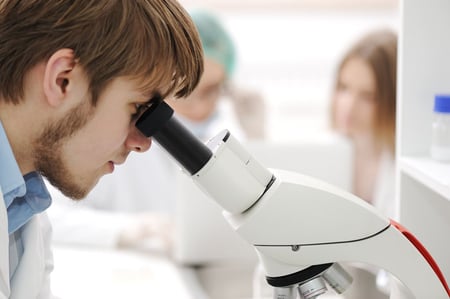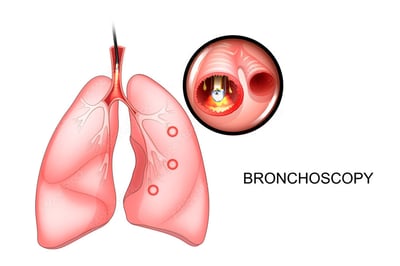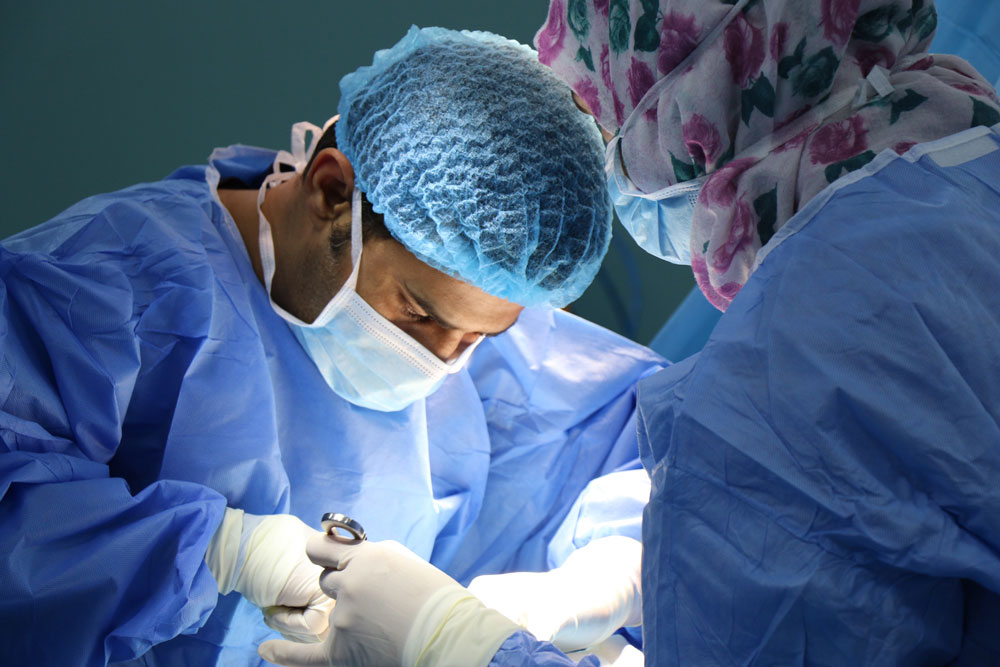Lung Cancer Answers is a website devoted to life issues for lung cancer patients and their families and is sponsored by Brad Cooper* of Cooper, Hart, Leggiero & Whitehead, PLLC. Cooper, Hart, Leggiero & Whitehead is located in The Woodlands, Texas (Greater Houston Area), handles cases nationwide with co-counsel in state of filing, and can be reached toll-free at 1-800-998-9729 for more information on lung cancer. Brad Cooper is not a medical doctor. The information on these pages is for the education of lung cancer patients and their families regarding potential medical and legal options. Patients are advised to consult with a medical doctor.
* Licensed by the Supreme Courts of Texas.
Lung Cancer Diagnosis
In general, the search for a lung tumor begins when a patient complains of a symptom or symptoms consistent with lung cancer. The doctor will complete an extensive and thorough history and physical. The patient will be asked about smoking history and exposure to secondhand smoke, asbestos exposure, radon exposure and exposure to certain other chemicals and toxins. The patient’s age and family history will also be taken into account. If the patient’s history fits with a possible diagnosis of lung cancer and the symptoms could be coming from a tumor, the physician’s suspicion of lung cancer is increased and the search for a tumor begins.
 There are a number of tests and studies performed in the search for a lung tumor; some tests are routine and others more specific for the diagnosis of lung cancer. Two routine tests that are performed are a complete metabolic panel (CMP; serum chemistry) and the complete blood count (CBC). The serum chemistry should include calcium and liver enzyme tests (also known as LFTs or liver function tests). The CBC includes counts of red and white blood cells and measurements of platelets. One or more abnormalities on these blood tests may support the diagnosis of lung cancer, but they cannot make the diagnosis alone.
There are a number of tests and studies performed in the search for a lung tumor; some tests are routine and others more specific for the diagnosis of lung cancer. Two routine tests that are performed are a complete metabolic panel (CMP; serum chemistry) and the complete blood count (CBC). The serum chemistry should include calcium and liver enzyme tests (also known as LFTs or liver function tests). The CBC includes counts of red and white blood cells and measurements of platelets. One or more abnormalities on these blood tests may support the diagnosis of lung cancer, but they cannot make the diagnosis alone.
A chest X-ray is the standard first study to diagnose lung cancer. X-ray radiation applied to the chest is captured on a sensitive film which provides information about structures inside of the chest.
The radiologist will carefully examine the chest X-ray searching for abnormalities. The detail provided by a standard X-ray can usually show if there is an abnormal growth; rarely will it show if the abnormality is cancer or not. In most cases, the X-ray simply provides a strong reason to pursue further testing.
The other test that is often used in the initial diagnosis of lung cancer is sputum cytology. The patient is asked to cough up mucus from the lungs. Alternatively, the throat is stimulated to produce a sample of cells from deep within the lungs. In the laboratory, this sample is concentrated and the cells are examined by a pathologist.
Lung cancer cells appear abnormal and can provide a good indication of the presence of cancer. Sputum cytology can even predict cancer type, but it is not usually sufficient for diagnosis. A positive sputum sample generally leads to a more definitive diagnostic procedure. Of note, the sputum cytology sample is of no use for tumors that are on the periphery (edge) of the lungs since the patient will not be able to produce sputum from this distant location.
Bronchoscopy
 A definitive diagnosis of lung cancer requires that cells be taken directly from the tumor. The manner by which these cells are obtained depends on where they are in the chest. If the tumor is in the center of the chest, near a bronchus or large bronchiole, a sample may be obtained by bronchoscopy. A bronchoscope is advanced down the airway and can be maneuvered through the bronchus to the site of the tumor. The bronchoscope has small surgical instruments in the tip which allow the pulmonologist to take a bit of the tumor for analysis.
A definitive diagnosis of lung cancer requires that cells be taken directly from the tumor. The manner by which these cells are obtained depends on where they are in the chest. If the tumor is in the center of the chest, near a bronchus or large bronchiole, a sample may be obtained by bronchoscopy. A bronchoscope is advanced down the airway and can be maneuvered through the bronchus to the site of the tumor. The bronchoscope has small surgical instruments in the tip which allow the pulmonologist to take a bit of the tumor for analysis.
Fluoroscopy
On the other hand, if the tumor is in the periphery of the lung, a sample could be reached by using a needle placed through the chest wall. A fluoroscope, which is an X-ray/CT scan hybrid that instantly provides images of the inside of the chest, is used to guide the biopsy needle. When this external approach is possible, the patient can avoid a surgical procedure to diagnose lung cancer.
Thoracoscopy
In some instances, the tumor cannot be reached by bronchoscopy or fluoroscopy. In these cases, a surgical procedure must be performed. The least invasive of these surgical procedures is thoracoscopy. A thoracoscopy is an endoscopic procedure in which a relatively small incision is made in the chest and a thoracoscope (endoscope) is advanced to the tumor. A biopsy is taken for further testing.
 In highly inaccessible tumors, an open surgical procedure may be necessary. This open procedure is called a thoracotomy. In a thoracotomy, the chest is opened and the entire tumor can be seen directly. When a thoracotomy is needed for diagnosis, the entire tumor may be removed along with some surrounding lung tissue. If so, pulmonary function tests (such as those that test lung capacity) should be performed ahead of time.
In highly inaccessible tumors, an open surgical procedure may be necessary. This open procedure is called a thoracotomy. In a thoracotomy, the chest is opened and the entire tumor can be seen directly. When a thoracotomy is needed for diagnosis, the entire tumor may be removed along with some surrounding lung tissue. If so, pulmonary function tests (such as those that test lung capacity) should be performed ahead of time.
Once a biopsy has been taken, regardless of the means, it is sent to a pathologist. This medical specialist will apply stains and histochemical markers to the sample and examine it under a microscope. This will provide a very accurate lung cancer diagnosis including a determination of the lung cancer type.
Read more about:
» Stages of Lung Cancer
Compensation information is available for those diagnosed with lung cancer. Call us toll-free at 1-800-998-9729.

©2026 Cooper, Hart, Leggiero & Whitehead, PLLC. All rights reserved.